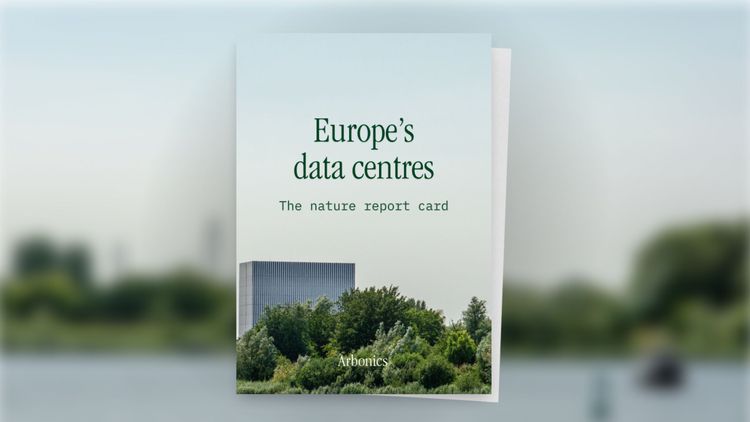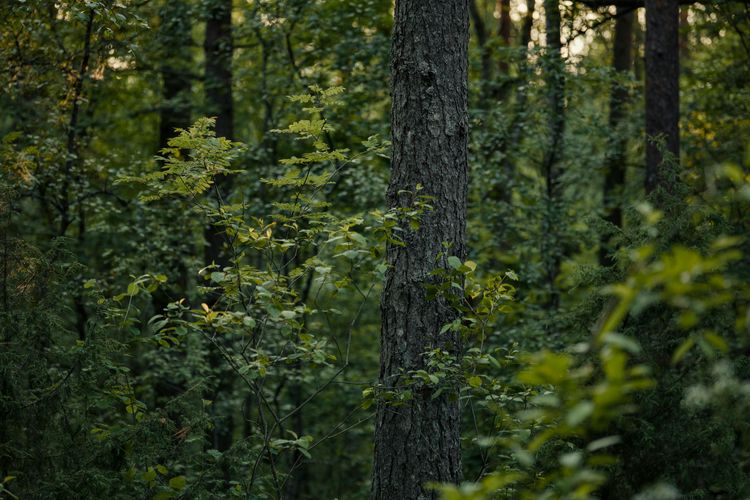A simple guide to European Spruce Bark Beetle
It's a serious threat to spruce trees and can destroy large areas of forest. In this article, we'll discuss what they do, how to spot them, and most importantly, how to minimise the damage to spruce trees from these little troublemakers.
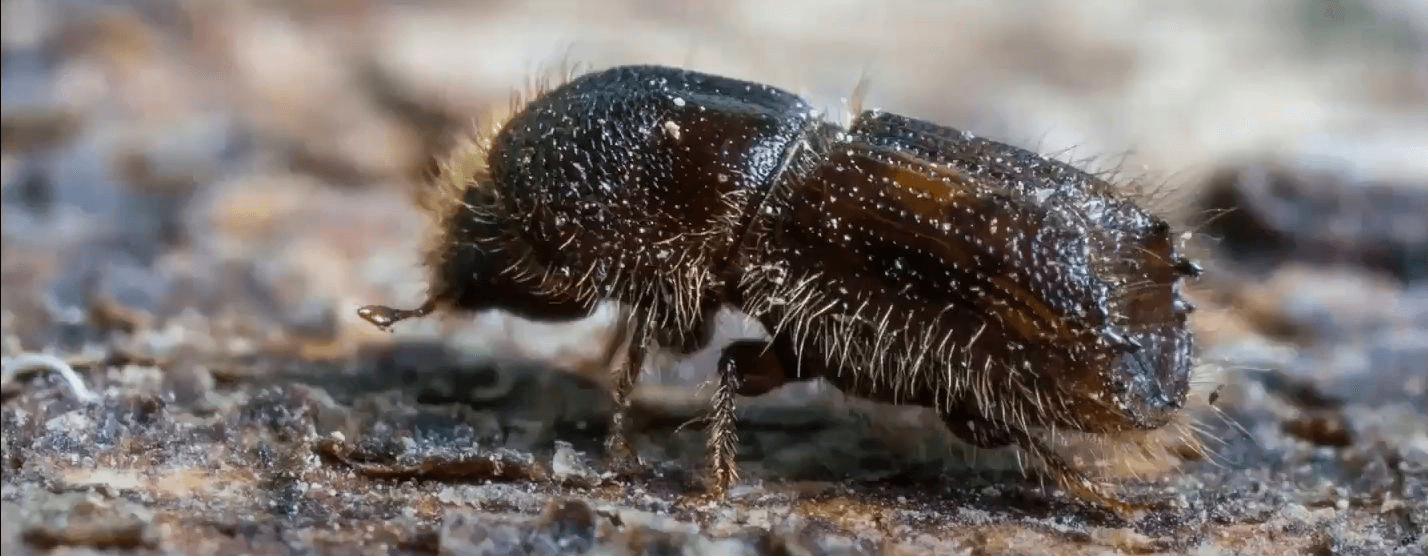
Source: forest management co-operative Mezsaimnieks
Why are they a problem?
Due to climate change and global warming, the population of bark beetle has increased significantly in the last few years. In general, there are two reasons for this. Warmer weather that lasts longer means that beetles have more time to reproduce and have not one but two generations in a year. And draughts make spruces weaker as they produce less resin, which means they are also more vulnerable to attacks.
When the average temperature reaches 20°C, the beetles start flying and attacking wilting and weakened spruces, especially after storms in hot and dry summers. They reproduce in windthrows and in other ways damaged spruces. That can lead to even more damage than the storm has done initially. If there is a lot of them they can also attack completely healthy spruces and kill them.
In general spruce bark beetle attacks large spruces (usually larger than 14cm in diameter) and special attention needs to be paid to spruces that are older than 50 years.
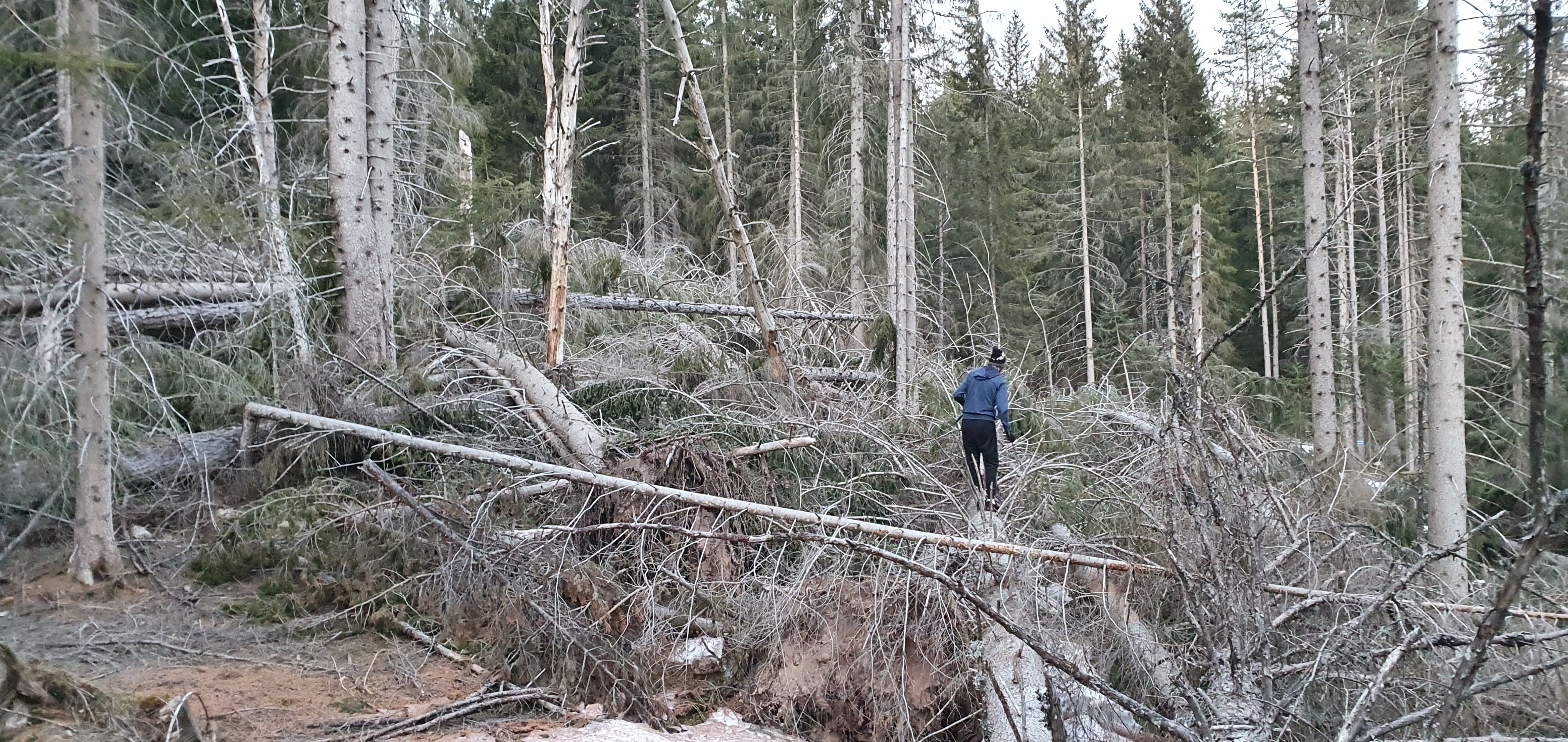
Source: private collection
How do they attack?
When it is time to attack the spruce, the first one to hit the tree is the male spruce bark beetle. The male beetle burrows into the trunk and creates a space for mating a.k.a. copulation room, which eventually kills the tree. When the tree is dead, the male beetle attracts 2-3 female beetles, which burrow tunnels as well and lay eggs. Later, larvae also burrow feeding tunnels.
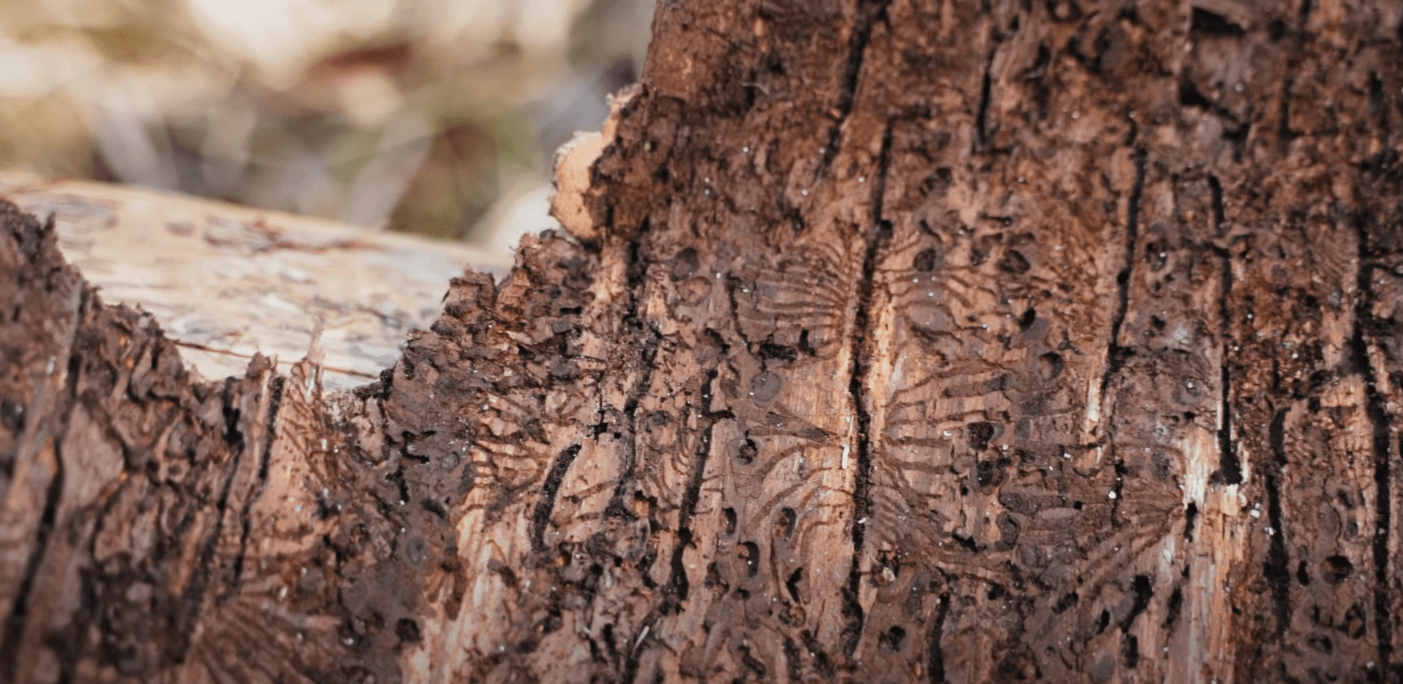
Source: "LVM un LVMI "Silava" filma par mizgrauzi" by LVM (Latvia's State Forests)
Spruce bark beetle in numbers:
- One female beetle can lay 60 eggs;
- it takes 3000 (in dry and hot summer) to 7000 (in wet and cold summer) beetles to kill a tree;
- Up to 70 000 beetles can reproduce in 1m3 of a tree left in the forest;
How to spot spruce bark beetle?
If you see a spruce that is already with brown needles and/or drooping bark, then it’s already too late. The tree is dead and there are no beetles in there left, they have moved on to the next tree. It is hard to spot newly infested trees. Things to look for are small (~1 mm) entering holes or brown bark dust on the stem of the tree, usually under branches or at the root collar (the place where roots start to appear at the stump). The amount of entering holes will be very small therefore it tends to be easier to spot bark dust particles instead. When there are many holes on the stem, it could include exit holes and the bark beetle is most likely not there anymore.
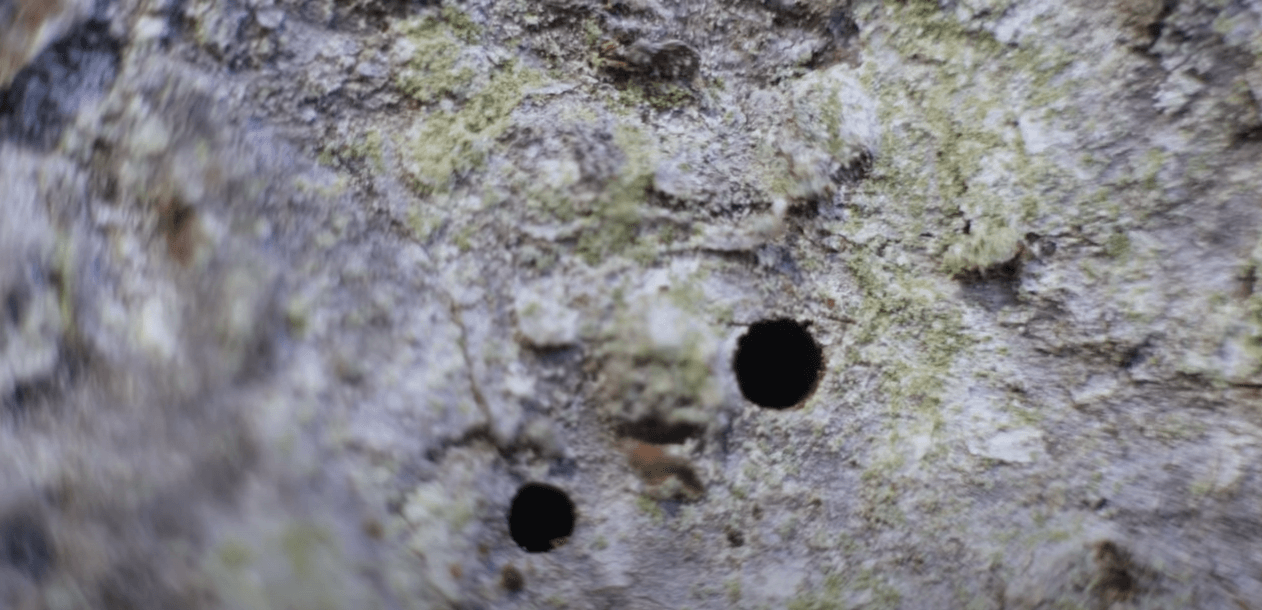
Source: "LVM un LVMI "Silava" filma par mizgrauzi" by LVM (Latvia's State Forests)
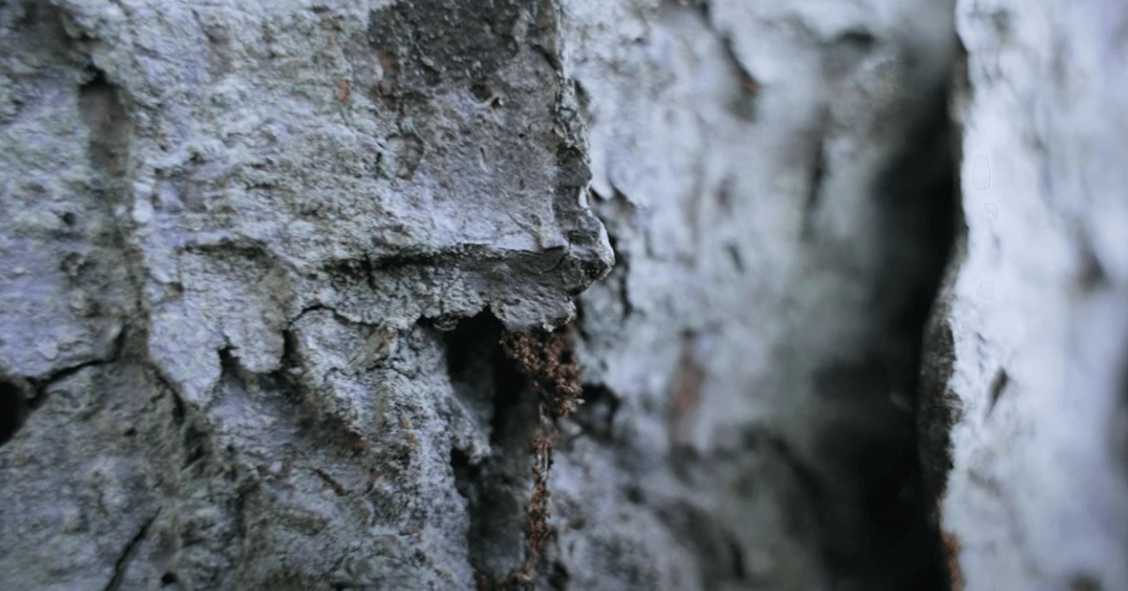
Source: "LVM un LVMI "Silava" filma par mizgrauzi" by LVM (Latvia's State Forests)
How to minimize the risk to existing spruce forests?
If from the previous autumn or winter period there are damaged, windthrown, broken, and/or leaning, spruces, then it is necessary to manage these areas and clear the spruces away, because weakened spruces will be the first place where beetles will go. That needs to be done before the active period when beetles start to fly, which is before the 1st of April.
Also, special attention needs to be paid to spruce cultures that are over 50 years old. If they are infested, they most likely won’t survive. The best practice is to cut it down to prevent infestation in neighbouring cultures.
Pheromone traps can be used to catch flying beetles. They are used in fresh spruce clear-cuts. Traps have to be in a 500 m radius of the culture that needs to be protected and they have to be regularly cleaned otherwise they lose their purpose. In Latvia, you need a permit from State Plant Protection Service to use this type of trap. Similar rules could be in place in other EU countries as well.
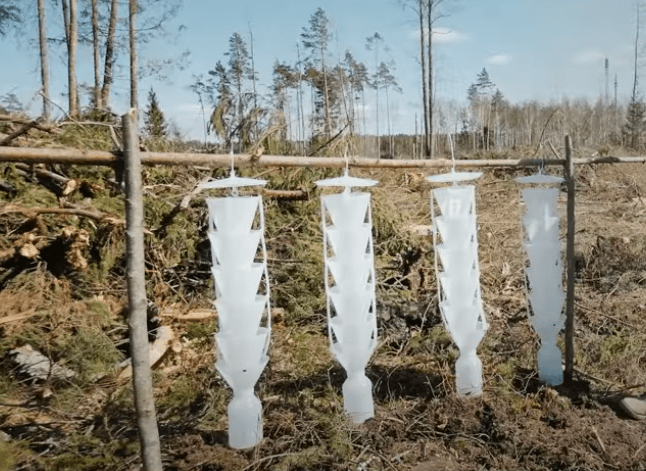
Source: "LVM un LVMI "Silava" filma par mizgrauzi" by LVM (Latvia's State Forests)
How to minimize the risk of damage in the future?
In Soviet times, spruces were planted for purpose of growing pulpwood, therefore cultures were planted with high tree density (~5k per ha). At that time law allowed thinning trees when they were ~40 years old which led to dense forests and trees with weak crowns and root systems. The result was weak, easily damaged by storm spruces, and therefore also very susceptible to spruce bark beetle attack.
Nowadays replanting and afforestation should be done with good-quality saplings, not too dense, and, when spruces start to compete with each other, pre-commercial thinning to decrease competition. Practice is to leave around 2.5 m from each tree, and later on, do one thinning and then the main cut.
Another important way to minimise damage is to use a mixture of tree species when planting because it spreads out spruces, which limits resources for the beetles and makes it more difficult for them to reproduce. For example, we know landowners who are mixing spruce with birch for that reason.
Also, it is important to plant spruce in soils that are appropriate for them. Otherwise, the growth of spruce can be stunned, which will lead to weakened trees. As previously mentioned, weakened trees are more likely to be damaged by the spruce bark beetle.
